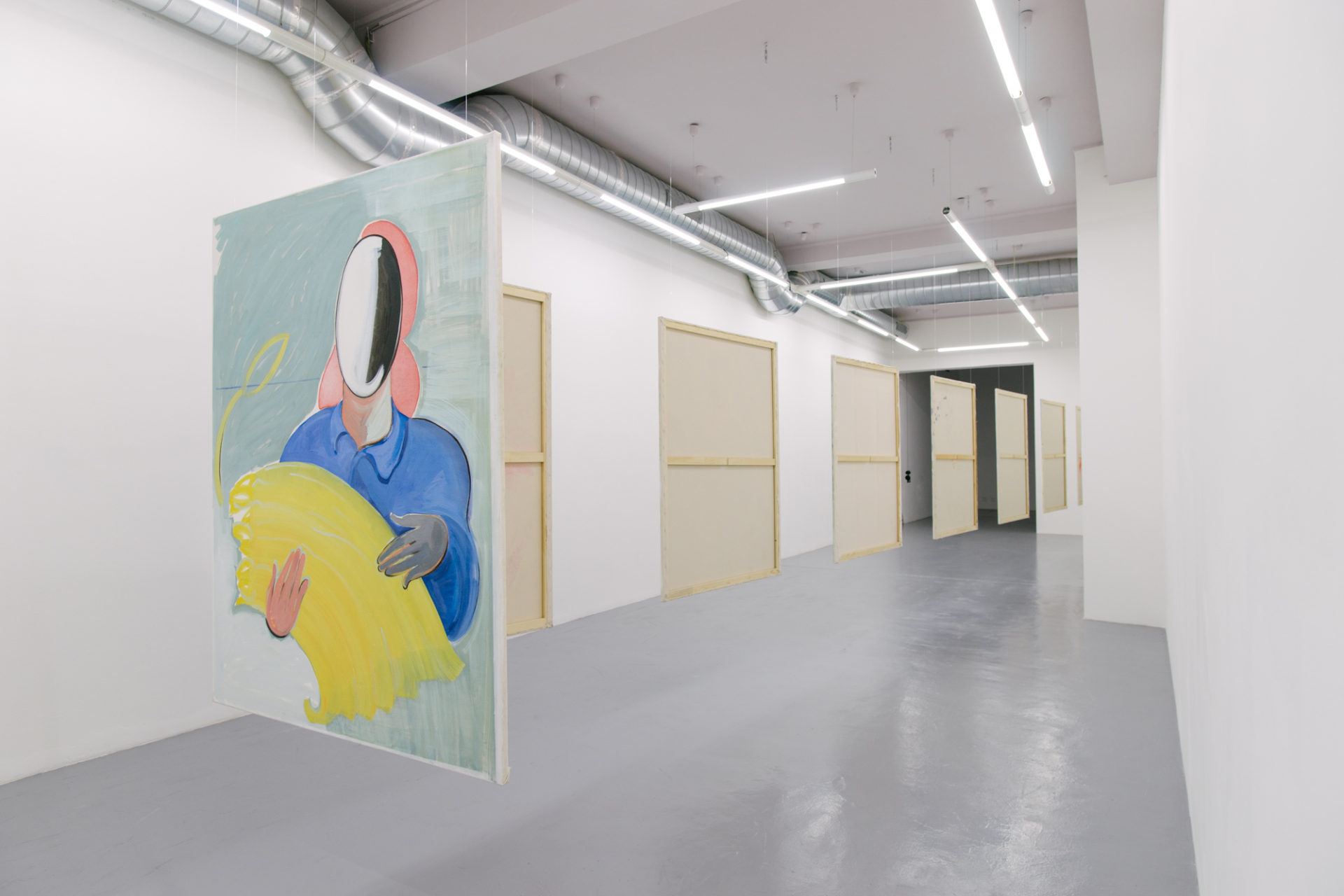Společně pokosíme, vymlátíme a odevzdáme, Galerie NoD Praha, 2018
Ve spolupráci s Maxem Máslo a Kateřinou Konvalinovou
Budovatelské období komunistického režimu sebou přineslo uskutečnění radikální sociální politiky. V souladu s marxismem, který do středu lidského života staví práci, se ve vztahu k ženám projevila především snahou o jejich zapojení do placené práce. Byla zavedena opatření v oblasti zákonodárné (zavedení mateřské dovolené, vznik školek i jeslí), ekonomické (podpora služeb pro domácnosti) i ideologické (obrazy jeřábnic či traktoristek v náborových plakátech i populární kultuře).
Reálně však tato emancipační politika naplněna nikdy nebyla- ženy spíš než na pozicích jeřábnic pracovaly na špatně placených pozicích v továrnách, školky ani slibované konzervované potraviny nebyly dostupné a tak se po práci ženy staraly o děti a zavařovaly, stejně jako dřív.
Využily ženy možnosti, které se jim nabízely nebo je vnímaly jako iluzivní? Historická věda takové zkušenosti zatím opomíjí, částečně protože nezapadají do rámce, ve kterém o budovatelském období komunistického režimu přemýšlíme. Možná to může být právě umění, které dokáže nejlépe ztvárnit napětí mezi současným obrazem komunistického režimu, jeho ideologií a vzpomínkami na něj.
Text: Karina Hoření
Together We’ll Mow, Tresh and Deliver the Harvest, NoD Gallery in Prague, 2018
In collaboration with Max Máslo and Kateřina Konvalinová
The construction-oriented stage of the communist rule entailed the enforcement of a radical line in the shaping of social policies. In accord with the Marxist doctrine´s assignment of the central position in human life to work, its application to women projected most tangibly into the overriding ambition to incorporate them into the employment system. This involved the introduction of various instruments in the legislative sphere (such as the institutionalization of state-funded maternal leave, and the establishment of nurseries and kindergartens), the economic system (e.g., state support of domestic services), and the ideological superstructure (with its profusion of public space imagery displaying female crane operators, tractor drivers and the like, on recruitment posters and across the popular culture spectrum).
In reality, however, this policy geared to emancipation was never implemented: rather than taking up coveted posts as crane operators, women were assigned to poorly paid factory shop floor jobs, and neither did the promised nurseries and wide choice of ready-to-consume foodstuffs eventually prove generally available, so women ended up taking care of the kids and making home-made preserves just as they had done before, now having to do with the time left after their working hours.
Did women seize the opportunities they were offered, or did they rather regard them as merely illusory? Lamentably, this accumulated wealth of past experience has so far remained largely untapped by historical science, partly because it does not fall strictly within the framework defined for our study of the construction-oriented stage of the communist rule in this country. Perhaps then it will be the language of art which may yet prove to be the most appropriate vehicle for projecting the tension between our present-day vision of the communist regime and its ideology, and our recollections of life in its orbit.
Karina Hoření











